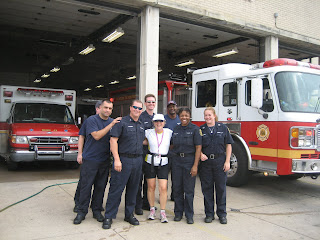Just ran across these 10 ideas of how to RE-use plastic bottles --- PK (REsponding to my own post)
Thanks for this excellent piece. You've done a lot of the legwork for someone who wants to do the right thing regarding the environment (and society). Oh, and REgarding the RE's, I'll second the RElax. Since I've been laid off, my back pain has virtually disappeared. Stress really does go straight to your spine. Also one might think about REinvesting in local businesses, farms, banks, services. Arianna Huffington had a post about moving your money from a big financial institution (Citibank) to a community bank or credit union. Keeping the money local helps. Also, REad. Does that count? I got a kindle last year and have never read more.--- Eric
I found your post to be motivating (and inspriational) -- we’ve tried many of the things in your list in the past but tend to drift away from them. Now is the time to make them permanent habits.--- Andy
Yes, yes and yes! Thanks Peter!
On the subject of food; I just received my pea-patch lot, and want to find the best guide on growing vegetables. Do you have any favorites? ---Vicki
( Yes, Vicki: Square Foot Gardening by Mel Bartholomew is the best by far. You can buy it from the Urbal Tea Store.)
I find myself thinking about your resolutions often. Indeed, I've started my own "compost stock" bag in the freezer, and am actively looking for ways to reuse plastic containers. Now if I could only figure out something to do with those NYT delivery bags...---Tom
In her comment below, Nancy G said...
How about RElax? Have a look at another blog and this posting in particular. Ruth Stout's book is worth looking for.
RE-hearse
RE-touch
Bravo! Peter---Ching
how bout REinvent?
of course, I also have to REedit. 40+ times.
and then there is REthink.
and REmarry.
(35, this coming year)
REfinance also.
REward.
REnew.
REview.
REinvigorate.
REnounce.
REstructure.
REsurrect.
REbel
REact or not.
and a happy New Year that is hopefully not REally REcycled except the good way.
Amen----Stephanie Palewski
I'm a bit stuck on Re-al which would be good if I had a buddy named Al. I'll keep thinking.---PEE
How about REinvigorate the environment. All it takes is REthinking our daily consumerism and REeducating ourselves and our communities about REspect for the environment. Collectively, we can undo some of the environment damage and turn this thing around. Love to all, keep up the urban farming.---Lana and Artis Yopp
A few notable omissions:
How about RE-volt!
RE-distribute (the ill-gotten wealth of America's banks, investment institutions, etc.)
RE-frain from participating
RE-load
RE-connointer
RE-bel
RE-cant
RE-create
RE-count
RE-group
RE-pent!
RE-neg
----Will Brumbach
REally agree with everything you've said. And I've been REinspired to do more and better!!!--- R. Bahr
Pete, as I was REading this message, David was sorting and carting all our recycling so we could go together to the Enfield transfer station, which unlike Thetford's 3 hours on Saturday morning set-up (with some hefty fees) is open four days and two NIGHTS a week. New Hampshire may not be all bad, I'm thinking. So on the way to recycle before supper I tell him about your REsolutions and he tells me -- God's honest truth, now --that while setting aside my father's blue plastic gin bottles, which cannot be recycled here, he was thinking about whether he could make them into some kind of wall or table, sort of cobalt stained glass effect, and was actually fitting them together to see how they'd go.... I guess REtired Kelman men think alike and a good thing it is for Planet Earth. ---M. Rich
Nice suggestions, Pete. Working on some of them. Those blue bags are my un-favorite.
- REusing paper is really important too!
- Weight REducing is so so painful tho.. food is so good, bad-for-us food is at least as good as any good-for-us food is, but we will do it!
- and REmember: use your coffee grounds to clean your cast iron pans, any other pans that are grotty, and it deodorizes your sink as well. --- E. Cohen
Here are two I personally have started to do that I would like to add to your comprehensive list:
- REfrain from eating meat products, especially beef. Cows are a huge contributor to carbon in our atmosphere.
- REduce purchases of books/magazines when we can borrow the same titles from the library. We need the trees to provide us with our supply of oxygen. --- D. Radtke



















